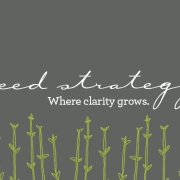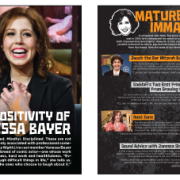Is Your Concept Working Hard Enough?
A strong concept is a powerful tool. It can help define a product or service, hone a positioning, assess the size of prize, brief developers and inform communication plans. But getting to that strong concept isn’t always easy. And while there are no true failures in a concept test (since all results offer the opportunity to learn valuable lessons), the reasons for underperforming can depend on a tremendous variety of factors.
At Seed, we’ve established proven approaches to crafting and optimizing winning concepts… and at the same time, identified a few factors commonly seen in those that fall short of testing hurdles. Here are the top five mistakes that could be standing between you and an “Outstanding” concept score.
1. Not rooted in a (real) consumer tension
You’ve created an awesome new product or service. It has incredible features. Why wouldn’t a consumer want your new-fangled-whatsit, now with XYZ technology!? Well, it may be because they don’t think about your category the same way you do. Perhaps the tension you’ve identified isn’t one that deeply resonates with your target, or at least isn’t articulated in the most effective way.
Take a step back and consider how your new product or service is making a meaningful difference in the consumer’s life—what real, tangible, relatable “rub” are you solving? What is the consumer personally getting out of it? This is essential for helping consumers see their need/desire for your offering. After all, most consumers are thinking about themselves first… and a great concept does, too.
THE GOOD: Wouldn’t it be great to have a naturally safe way to clean your family’s bathroom?
THE NOT-SO-GOOD: Wouldn’t it be great to have a bathroom cleaner made with baking soda?
2. Jam-packed with features and benefits
It’s easy to get excited about all of the great things your product or service has to offer. And really, who wouldn’t want the one thing that can do it all? Well, with so much going on, it can be difficult for a consumer to decipher what the main point of your concept is—and thus, clarity and understanding can suffer.
Additionally, even if the concept does well in testing, an include-everything approach doesn’t allow you to pinpoint what is truly driving success (“was it the protein content or on-the-go packaging?”). Finally, keeping things short and sweet will better appeal to respondents’ fleeting attention spans.
THE GOOD: The only pen with unsmudgable ink.
THE NOT-SO-GOOD: The only collapsible pen with unsmudgable ink that you can recycle once it runs out.
3. Falls short visually
When in doubt, show—don’t tell. Often times, however, the visual component doesn’t get the attention it’s due, resulting in something that either doesn’t properly represent the new-news of the concept, or worse, actively detracts from appeal. This is especially true with food and beverage concepts.
As the saying goes, we eat with our eyes. And with so many cooking shows, Instagram pics and magazine beauty shots surrounding us, our eyes have higher standards than ever before. That’s why it’s so important to put in the effort to create mouthwatering visuals that entice and enhance the overall concept.
4. Focused on the negative
You’ve identified a true consumer tension. You’re providing a now-frictionless experience. Awesome. But framing all of this up in a negative light can be off-putting—even if the overall experience you’re promising is positive.
Instead of telling consumers what’s wrong with their routines, or how they struggle to succeed… spin it to the positive. People are trying their best, and looking for ways to add more good into their lives, so help them see the bright future that awaits, thanks to your new product or service.
THE GOOD: In the rush of the morning, it’s not always easy to get a balanced breakfast on the table.
THE NOT-SO-GOOD: You’re too busy in the morning to provide a balanced breakfast for your family.
5. Tells a meandering story
A great concept stays laser-focused on a single idea from top to bottom. If you’re writing a concept for gloves and set the context around a better fit in the insight, that should be the sole focus all the way to the end. Unfortunately, many concepts zigzag through several features and benefits—so a concept that starts out with fit, ends up talking about smartphone-friendly finger pads. Plus, being diligently focused in your concept will make for a smoother transition to communication briefs later.
Creating winning concepts is equal parts art and science. But checking for these five characteristics can help you craft strong ideas with the power to succeed.
If you’d like to share some of your own concept-creation tips and experiences, I’d love to hear about them—reach out to me on LinkedIn. And if you already HAVE a winning concept, be sure to check out this helpful article: 6 Ways Successful Concepts Can Turn Into Failed Products.
Angela Jones is a VP, Creative at Seed Strategy and Managing Editor for Seed’s e-mag, The Fire Theft Project: Conversations on Creativity. She specializes in capturing the essence of new ideas, and helping lead teams towards a fully realized creative vision.
Connect with us! Follow Seed Strategy on LinkedIn, Twitter, Facebook and Instagram.









